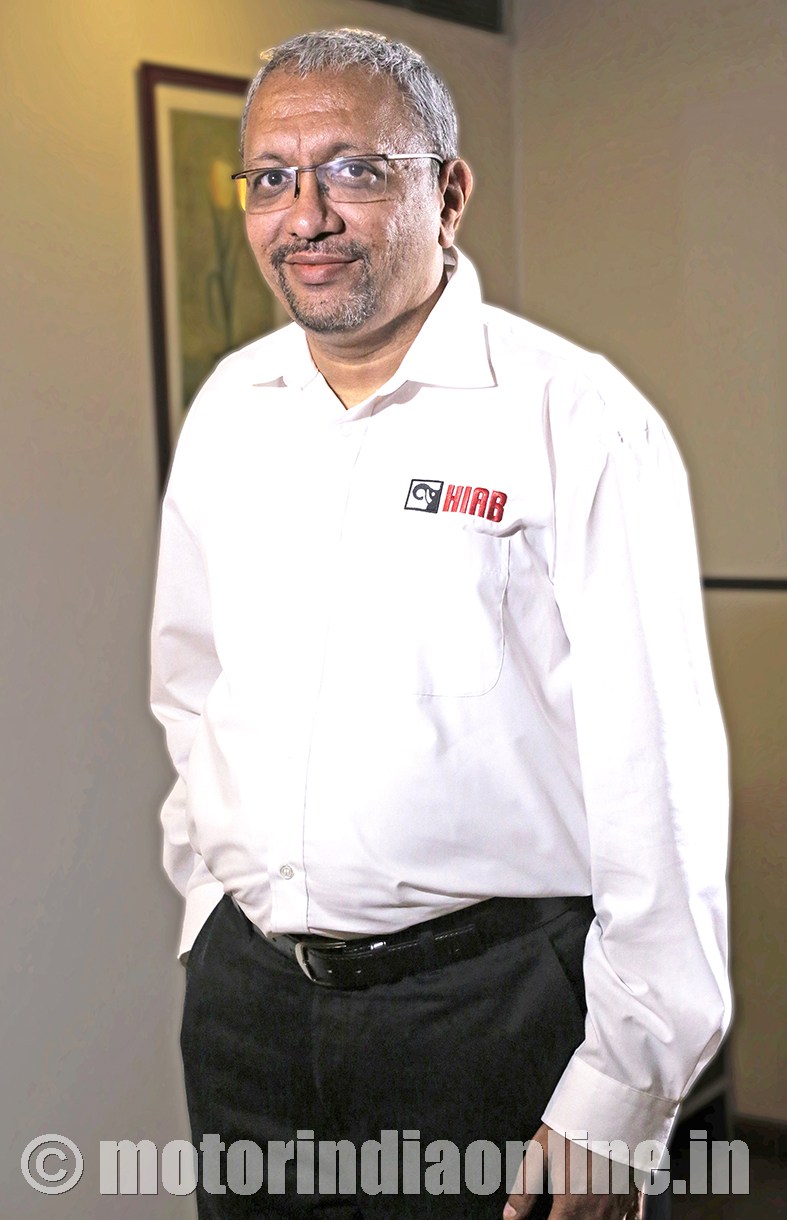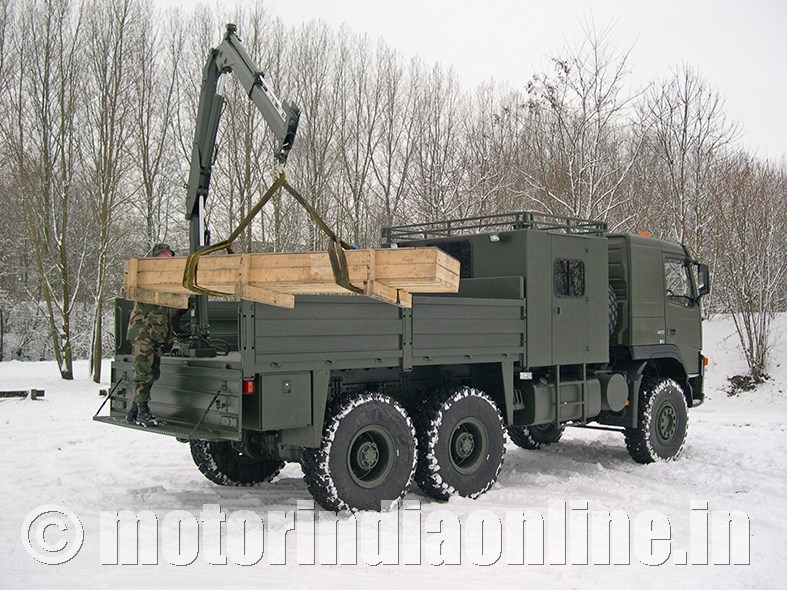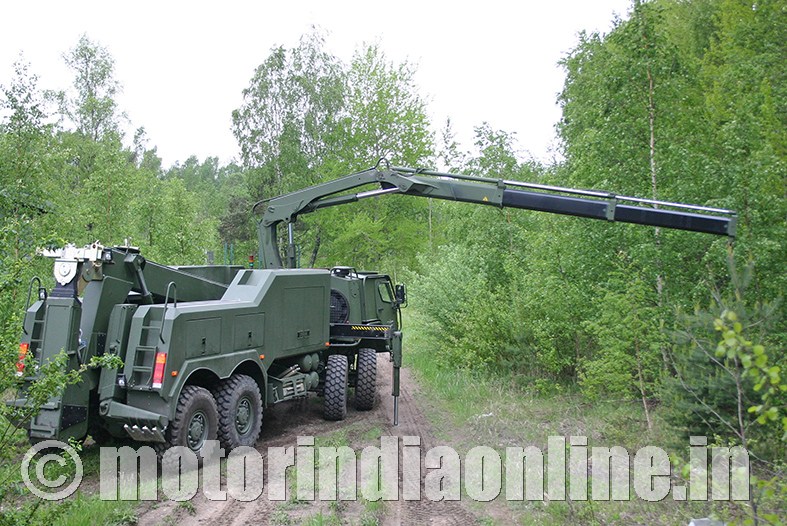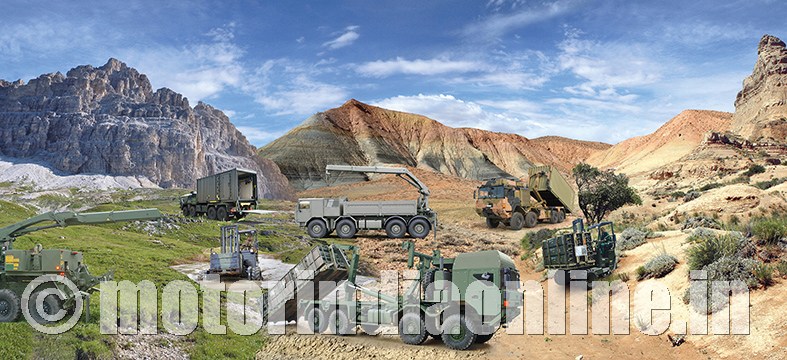For the Swedish ski manufacturer, Eric Sundin, designing hydraulic cranes to haul wood from the forests to his work floor was a natural extension. Hence, it was no surprise that Hiab – Hydrauliska Industri AB – was born in 1944.

With making load handling equipment as its core activity, Hiab in the initial years, worked to fulfill in-house consumption. Pioneers in making cranes – particularly knuckle boom crane, Hiab has made its name worldwide in the last 70 years. As part of Cargotec, headquartered in Helsinki, Finland, Hiab began to cooperate with Indian civil and defence sectors almost 30 years ago.
Mr. S. Srinivas, Director – Hiab Government Business Operations, India, explains: “We set foot in India in 2007 but many of the defence projects came by in 1985 and we already had installed 660 cranes by then in India. Then in 2004, we bagged an order from BEML for 200 cranes which triggered Cargotec to make its presence active in India because it became an important market for us. We introduced our products into both civil as well as defence markets. In 2008 and 2009 Indian army started looking at cranes as commodities for their trucks. In the next couple of years, we started the trials. The orders started coming in from 2015. In the last three years we have had orders for 2,200 cranes.”
Steady expansion
And the orders kept coming in… in the form of over 600 loader cranes from one of their biggest buyers in India for defence, Tata Motors, “Their original order was in 2015 for 1,200 cranes which are in the eight tonne meter capacity class, which was delivered last year. This was one of the largest orders for Hiab anywhere in the world in the defence sector. We are still providing training as part of our after sales support and since it’s a continued requirement from the army, it has come in as the latest order. We have also received orders for 355 loader cranes from Ashok Leyland. We are further expecting more orders”, shares Mr. Srinivas.
The cranes are used for transportation purposes: to load-unload supplies, spare part and other operational equipment. These orders have established Hiab as the leading loader crane supplier in India. He explains: “The delivered cranes are in Hiab’s medium crane range as that was the demand of the tenders. Hiab does not scale down products for different markets. Hiab has various crane control systems depending on the market and legislation demands. So we have a wide range to offer – from a simple crane with manual operated levers to those offering full scale electronics, and radio remote control. Then we also have a special range of military cranes. It means that a full product crane range is available to every market including India.”
India – a different ball game
Catering to India’s needs – especially in the civil sector – is a different ball game, in various ways.
The concept of safety, comfort and technology is not a priority in the Indian civil market as compared to Europe and Americas. It would take time before  the Indian civil customers would be at par with the features, quality, safety and comfort as in European countries and Americas. Even then, large corporate houses can be seen recognizing and demanding these features.
the Indian civil customers would be at par with the features, quality, safety and comfort as in European countries and Americas. Even then, large corporate houses can be seen recognizing and demanding these features.
Unlike around the world, Indian market for civil sector is extremely small. He shares: “There are many brands from around the world offering their products. Hiab is also actively working on it, even though our growth comes from the defence sector.”
Across the world, Hiab holds a substantial share in the defence sector. Mr. Srinivas knows that the defence equipment needs to be supported for the next 15-20 years once sold, “Armies across the world are conservative. They do not like to make a significant change in their proven solutions. If the Indian army has an eight tonne meter crane then it means that we need to keep the manuals and spare parts catalogues up to date to support them because they will keep requiring spare parts and training.”
Waiting game
 This translates into long gestation periods for military projects. Dealing with these long term projects is a major challenge. Mr. Srinivas responds: “Both civil and defence markets have a long incubation time. When we entered the Indian market with a knuckle boom or a truck-mounted crane, people needed time to understand why they should buy it. The challenge was high because the cranes were as expensive as the trucks. But we were successful with some niche applications in the civilian products. Also, the cost is always the criterion. We have to sustain it with big volume projects. The investments that were made in the last few years are coming to fruition now.”
This translates into long gestation periods for military projects. Dealing with these long term projects is a major challenge. Mr. Srinivas responds: “Both civil and defence markets have a long incubation time. When we entered the Indian market with a knuckle boom or a truck-mounted crane, people needed time to understand why they should buy it. The challenge was high because the cranes were as expensive as the trucks. But we were successful with some niche applications in the civilian products. Also, the cost is always the criterion. We have to sustain it with big volume projects. The investments that were made in the last few years are coming to fruition now.”
Taking on the competition becomes easier for Hiab even with the long gestation periods because of the range of products on offer. He explains further: “When you look to buy a pre-used crane, the most sought out brand is the HIAB.”
Attractive range
Technology is attractive, especially if it enables such features on the equipment which entice the customers – for example crane tip control allowing for an absolute vertical lift by operating just one lever, a low foldable knuckle boom crane, and auto-folding. He shares: “We have to keep our knuckle boom crane small yet strong and light. Hence, we use imported high tensile grade steel, though soon we intend to start producing it in India.”
What makes Hiab attractive besides their wide range of cranes is that they wish to establish themselves as ‘a local player’ to support the army.
Factoring safety in
Safety is a risky business in India because it is optional. In his experience, Mr. Srinivas admits that most civil customers do not look for high-tech safety systems, “But we do not compromise on safety. As technology, it is in-built for both civil and defence applications.”
Hiab is frequently introducing state-of-the art developments in the crane industry. Mr. Srinivas sounds upbeat, “The last two years have been good especially the defence market. We are already committed to the Indian truck companies to whom we will offer products manufactured and assembled in India with a substantial local content.”
The civil crane market is yet to mature and it also has its own challenges because every customer is different in its application and requirements, feels Mr. Srinivas.
Hiab under Mr. Srinivas is confident of its expanding market share in India because its designs are already established, and they are ready to work with local sourcing companies and suppliers and help them adapt to their engineering and design.
By the next batch of orders from Indian defence sector and truck companies, in all possibility, Hiab shall be delivering from Indian soil.
